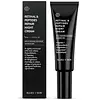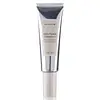What's inside
What's inside
 Key Ingredients
Key Ingredients

 Benefits
Benefits

 Concerns
Concerns

 Ingredients Side-by-side
Ingredients Side-by-side

Water
Skin ConditioningGlycerin
HumectantCaprylic/Capric Triglyceride
MaskingPropanediol
SolventArgania Spinosa Kernel Oil
EmollientSodium Acrylates Copolymer
Hydrolyzed Candida Saitoana Extract
Skin ProtectingSodium Stearoyl Glutamate
CleansingAlbizia Julibrissin Bark Extract
MaskingDimethyl Isosorbide
SolventGalactoarabinan
Palmitoyl Tetrapeptide-7
Skin ConditioningPalmitoyl Oligopeptide
CleansingCaprooyl Tetrapeptide-3
Skin ProtectingCassia Angustifolia Seed Polysaccharide
Skin ConditioningHyaluronic Acid
HumectantOxycoccus Palustris Seed Oil
AntioxidantRubus Chamaemorus Seed Oil
Skin ConditioningNiacinamide
SmoothingWithania Somnifera Root Extract
Skin ConditioningCitrus Aurantium Dulcis Callus Culture Extract
Skin ConditioningRetinal
Skin ConditioningEllagic Acid
Skin ConditioningPhenyl T-Butylnitrone
AntioxidantErgothioneine
AntioxidantGlutathione
Mirabilis Jalapa Flower/Leaf/Stem Extract
Skin ConditioningN-Hydroxysuccinimide
Skin ConditioningChrysin
Skin ConditioningGlutamylamidoethyl Imidazole
Lonicera Caprifolium Flower Extract
PerfumingLonicera Japonica Flower Extract
Skin ConditioningLavandula Hybrida Oil
EmollientPentylene Glycol
Skin ConditioningButylene Glycol
HumectantCyclodextrin
AbsorbentCaprylyl Glycol
EmollientSteareth-20
CleansingCitric Acid
BufferingXanthan Gum
EmulsifyingDextran
Acetyl Tributyl Citrate
MaskingPotassium Sorbate
PreservativePhenoxyethanol
PreservativeGeraniol
PerfumingLimonene
PerfumingLinalool
PerfumingWater, Glycerin, Caprylic/Capric Triglyceride, Propanediol, Argania Spinosa Kernel Oil, Sodium Acrylates Copolymer, Hydrolyzed Candida Saitoana Extract, Sodium Stearoyl Glutamate, Albizia Julibrissin Bark Extract, Dimethyl Isosorbide, Galactoarabinan, Palmitoyl Tetrapeptide-7, Palmitoyl Oligopeptide, Caprooyl Tetrapeptide-3, Cassia Angustifolia Seed Polysaccharide, Hyaluronic Acid, Oxycoccus Palustris Seed Oil, Rubus Chamaemorus Seed Oil, Niacinamide, Withania Somnifera Root Extract, Citrus Aurantium Dulcis Callus Culture Extract, Retinal, Ellagic Acid, Phenyl T-Butylnitrone, Ergothioneine, Glutathione, Mirabilis Jalapa Flower/Leaf/Stem Extract, N-Hydroxysuccinimide, Chrysin, Glutamylamidoethyl Imidazole, Lonicera Caprifolium Flower Extract, Lonicera Japonica Flower Extract, Lavandula Hybrida Oil, Pentylene Glycol, Butylene Glycol, Cyclodextrin, Caprylyl Glycol, Steareth-20, Citric Acid, Xanthan Gum, Dextran, Acetyl Tributyl Citrate, Potassium Sorbate, Phenoxyethanol, Geraniol, Limonene, Linalool
Water
Skin ConditioningGlycerin
HumectantDimethicone
EmollientSimmondsia Chinensis Seed Oil
EmollientSqualane
EmollientGlyceryl Stearate
EmollientCetyl Alcohol
EmollientNiacinamide
SmoothingStearyl Alcohol
EmollientPalmitoyl Tripeptide-5
Skin ConditioningPantolactone
HumectantPalmitoyl Tripeptide-1
Skin ConditioningPalmitoyl Tetrapeptide-7
Skin ConditioningHydrolyzed Plukenetia Volubilis Seed Extract
Emulsion StabilisingDunaliella Salina Extract
Skin ConditioningSodium Hyaluronate
Humectant3-O-Ethyl Ascorbic Acid
Skin ConditioningPanthenol
Skin ConditioningCaryodendron Orinocense Seed Oil
EmollientHonokiol
AntioxidantMagnolol
AntioxidantPalmitic Acid
EmollientSorbitan Oleate
EmulsifyingAluminum Starch Octenylsuccinate
AbsorbentHydroxyacetophenone
AntioxidantStearic Acid
CleansingAcrylamide/Sodium Acryloyldimethyltaurate Copolymer
Emulsion StabilisingPolyglyceryl-6 Laurate
Emulsifying1,2-Hexanediol
Skin ConditioningBoron Nitride
AbsorbentCaprylyl Glycol
EmollientPolyglyceryl-10 Oleate
Skin ConditioningIsohexadecane
EmollientButylene Glycol
HumectantChlorphenesin
AntimicrobialAcrylates/C10-30 Alkyl Acrylate Crosspolymer
Emulsion StabilisingTocopheryl Acetate
AntioxidantPolysorbate 80
EmulsifyingSorbitan Palmitate
EmulsifyingSodium Hydroxide
BufferingSodium Benzoate
MaskingCarbomer
Emulsion StabilisingSodium Lactate
BufferingPhenoxyethanol
PreservativePolysorbate 20
EmulsifyingCitric Acid
BufferingEthylhexylglycerin
Skin ConditioningPotassium Sorbate
PreservativeWater, Glycerin, Dimethicone, Simmondsia Chinensis Seed Oil, Squalane, Glyceryl Stearate, Cetyl Alcohol, Niacinamide, Stearyl Alcohol, Palmitoyl Tripeptide-5, Pantolactone, Palmitoyl Tripeptide-1, Palmitoyl Tetrapeptide-7, Hydrolyzed Plukenetia Volubilis Seed Extract, Dunaliella Salina Extract, Sodium Hyaluronate, 3-O-Ethyl Ascorbic Acid, Panthenol, Caryodendron Orinocense Seed Oil, Honokiol, Magnolol, Palmitic Acid, Sorbitan Oleate, Aluminum Starch Octenylsuccinate, Hydroxyacetophenone, Stearic Acid, Acrylamide/Sodium Acryloyldimethyltaurate Copolymer, Polyglyceryl-6 Laurate, 1,2-Hexanediol, Boron Nitride, Caprylyl Glycol, Polyglyceryl-10 Oleate, Isohexadecane, Butylene Glycol, Chlorphenesin, Acrylates/C10-30 Alkyl Acrylate Crosspolymer, Tocopheryl Acetate, Polysorbate 80, Sorbitan Palmitate, Sodium Hydroxide, Sodium Benzoate, Carbomer, Sodium Lactate, Phenoxyethanol, Polysorbate 20, Citric Acid, Ethylhexylglycerin, Potassium Sorbate
 Reviews
Reviews

Ingredients Explained
These ingredients are found in both products.
Ingredients higher up in an ingredient list are typically present in a larger amount.
Butylene Glycol (or BG) is used within cosmetic products for a few different reasons:
Overall, Butylene Glycol is a safe and well-rounded ingredient that works well with other ingredients.
Though this ingredient works well with most skin types, some people with sensitive skin may experience a reaction such as allergic rashes, closed comedones, or itchiness.
Learn more about Butylene GlycolCaprylyl Glycol is a humectant and emollient, meaning it attracts and preserves moisture.
It is a common ingredient in many products, especially those designed to hydrate skin. The primary benefits are retaining moisture, skin softening, and promoting a healthy skin barrier.
Though Caprylyl Glycol is an alcohol derived from fatty acids, it is not the kind that can dry out skin.
This ingredient is also used as a preservative to extend the life of products. It has slight antimicrobial properties.
Learn more about Caprylyl GlycolCitric Acid is an alpha hydroxy acid (AHA) naturally found in citrus fruits like oranges, lemons, and limes.
Like other AHAs, citric acid can exfoliate skin by breaking down the bonds that hold dead skin cells together. This helps reveal smoother and brighter skin underneath.
However, this exfoliating effect only happens at high concentrations (20%) which can be hard to find in cosmetic products.
Due to this, citric acid is usually included in small amounts as a pH adjuster. This helps keep products slightly more acidic and compatible with skin's natural pH.
In skincare formulas, citric acid can:
While it can provide some skin benefits, research shows lactic acid and glycolic acid are generally more effective and less irritating exfoliants.
Most citric acid used in skincare today is made by fermenting sugars (usually from molasses). This synthetic version is identical to the natural citrus form but easier to stabilize and use in formulations.
Read more about some other popular AHA's here:
Learn more about Citric AcidGlycerin is already naturally found in your skin. It helps moisturize and protect your skin.
A study from 2016 found glycerin to be more effective as a humectant than AHAs and hyaluronic acid.
As a humectant, it helps the skin stay hydrated by pulling moisture to your skin. The low molecular weight of glycerin allows it to pull moisture into the deeper layers of your skin.
Hydrated skin improves your skin barrier; Your skin barrier helps protect against irritants and bacteria.
Glycerin has also been found to have antimicrobial and antiviral properties. Due to these properties, glycerin is often used in wound and burn treatments.
In cosmetics, glycerin is usually derived from plants such as soybean or palm. However, it can also be sourced from animals, such as tallow or animal fat.
This ingredient is organic, colorless, odorless, and non-toxic.
Glycerin is the name for this ingredient in American English. British English uses Glycerol/Glycerine.
Learn more about GlycerinNiacinamide is a multitasking form of vitamin B3 that strengthens the skin barrier, reduces pores and dark spots, regulates oil, and improves signs of aging.
And the best part? It's gentle and well-tolerated by most skin types, including sensitive and reactive skin.
You might have heard of "niacin flush", or the reddening of skin that causes itchiness. Niacinamide has not been found to cause this.
In very rare cases, some individuals may not be able to tolerate niacinamide at all or experience an allergic reaction to it.
If you are experiencing flaking, irritation, and dryness with this ingredient, be sure to double check all your products as this ingredient can be found in all categories of skincare.
When incorporating niacinamide into your routine, look out for concentration amounts. Typically, 5% niacinamide provides benefits such as fading dark spots. However, if you have sensitive skin, it is better to begin with a smaller concentration.
When you apply niacinamide to your skin, your body converts it into nicotinamide adenine dinucleotide (NAD). NAD is an essential coenzyme that is already found in your cells as "fuel" and powers countless biological processes.
In your skin, NAD helps repair cell damage, produce new healthy cells, support collagen production, strengthen the skin barrier, and fight environmental stressors (like UV and pollution).
Our natural NAD levels start to decline with age, leading to slower skin repair, visible aging, and a weaker skin barrier. By providing your skin niacinamide, you're recharging your skin's NAD levels. This leads to stronger, healthier, and younger looking skin.
Another name for vitamin B3 is nicotinamide. This vitamin is water-soluble and our bodies don't store it. We obtain Vitamin B3 from either food or skincare. Meat, fish, wheat, yeast, and leafy greens contain vitamin B3.
The type of niacinamide used in skincare is synthetically created.
Learn more about NiacinamidePalmitoyl Tetrapeptide-7 (formerly Palmitoyl Tetrapeptide-3) is a lab-made peptide with anti-inflammatory and skin-repairing benefits. It's made up of four amino acids (glycine, glutamine, proline, and arginine) and palmitic acid (which helps it penetrate skin more effectively).
This ingredient helps reduce inflammation by limiting the production of interleukin-6 (IL-6), a chemical that triggers inflammatory responses, particularly after UV exposure.
Less inflammation = slower collagen breakdown and a longer-lasting, youthful appearance.
Palmitoyl Tetrapeptide-7 also stimulates collagen production and supports a healthier skin barrier.
Over time, this can improve skin firmness, hydration, and reduce the appearance of fine lines. It’s commonly paired with Palmitoyl Tripeptide-1 in the well-known Matrixyl 3000 complex for enhanced anti-aging effects.
This ingredient has been shown to be effective and safe in cosmetic use and you'll typically find it in small amounts (less than 0.01%).
Due to its palmitic acid base, it may not be safe for Malassezia folliculitis.
Read more about other common types of peptides here:
Learn more about Palmitoyl Tetrapeptide-7Phenoxyethanol is a preservative that has germicide, antimicrobial, and aromatic properties. Studies show that phenoxyethanol can prevent microbial growth. By itself, it has a scent that is similar to that of a rose.
It's often used in formulations along with Caprylyl Glycol to preserve the shelf life of products.
Potassium Sorbate is a preservative used to prevent yeast and mold in products. It is commonly found in both cosmetic and food products.
This ingredient comes from potassium salt derived from sorbic acid. Sorbic acid is a natural antibiotic and effective against fungus.
Both potassium sorbate and sorbic acid can be found in baked goods, cheeses, dried meats, dried fruit, ice cream, pickles, wine, yogurt, and more.
You'll often find this ingredient used with other preservatives.
Learn more about Potassium SorbateWater. It's the most common cosmetic ingredient of all. You'll usually see it at the top of ingredient lists, meaning that it makes up the largest part of the product.
So why is it so popular? Water most often acts as a solvent - this means that it helps dissolve other ingredients into the formulation.
You'll also recognize water as that liquid we all need to stay alive. If you see this, drink a glass of water. Stay hydrated!
Learn more about Water